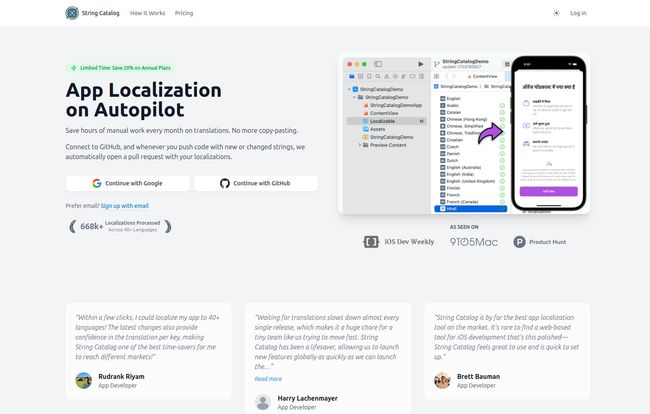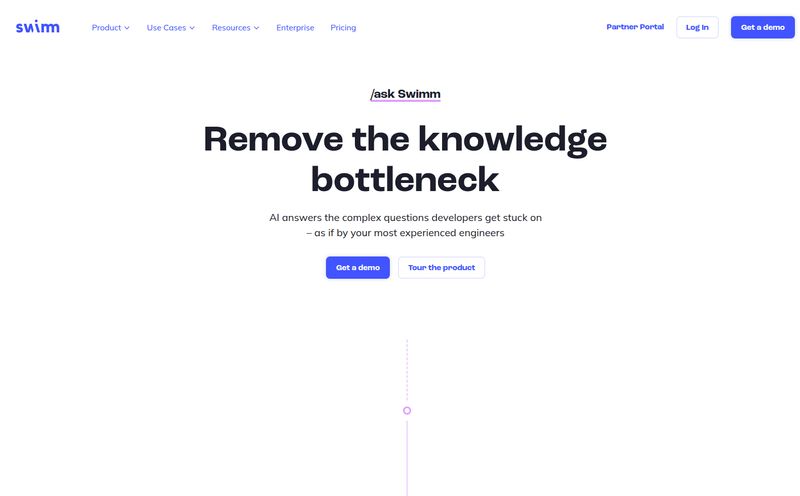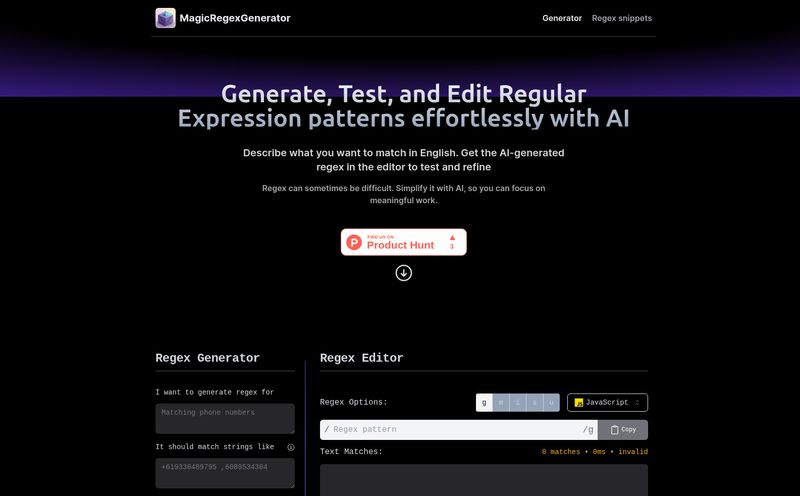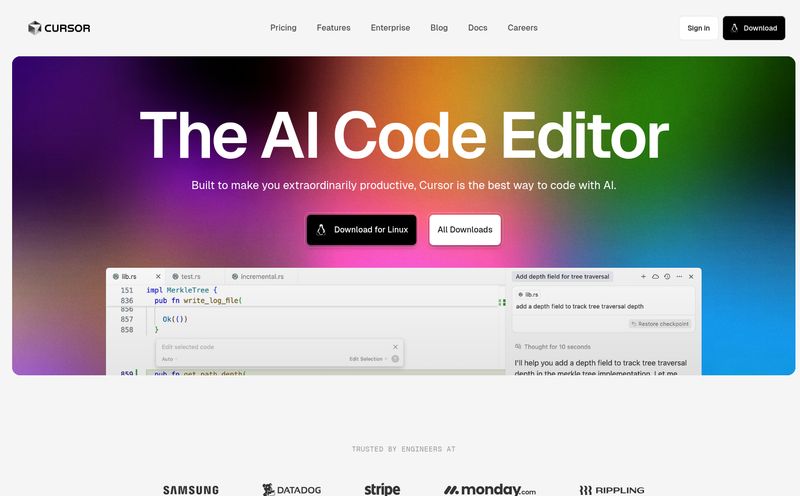I still have flashbacks. It was 2018, and we were localizing a moderately successful iOS app into German, French, and Japanese. The process was, to put it mildly, a soul-crushing nightmare. We were drowning in a sea of spreadsheets, emailing string files back and forth with freelance translators, and manually copy-pasting everything into Xcode. A single typo, a misplaced variable, and the whole build would just fall over. It felt less like software development and more like digital arts and crafts. Bad arts and crafts.
Ever since then, I've kept a close eye on any tool that promises to make app localization less painful. We've seen some improvements, sure, but most solutions still feel like a band-aid on a bigger problem. They manage the files, but they don't solve the core bottleneck: the actual translation and integration workflow.
Then I stumbled upon a tool called String Catalog. The promise? "App Localization on Autopilot." My cynical developer brain immediately thought, "Yeah, right. 'Autopilot' like a toddler with a crayon in a cockpit." But the more I looked, the more intrigued I became. Could this be the one? The tool that finally lets us escape the translation hamster wheel?
So, What Exactly is String Catalog?
In a nutshell, String Catalog is an AI-powered platform designed specifically to automate the translation process for iOS and Android applications. Forget spreadsheets. Forget endless email chains. The whole idea is to hook directly into your development workflow—specifically, your GitHub repository—and handle the heavy lifting for you.

Visit String Catalog
It scans your project for your base language strings (you know, the `Localizable.strings` for iOS or `strings.xml` for Android folks) and then uses AI to translate them into over 40 different languages. But the real magic, the part that got my attention, is that it doesn't just email you a file. It creates a pull request on GitHub with all the new, translated files, ready for you to review and merge. It’s a complete workflow, not just a translation machine.
How It Works: The Three-Step Dance to Global Domination
The beauty of this platform is its simplicity. They've boiled the whole chaotic process of localization down to three pretty straightforward steps. It’s almost suspiciously easy.
First, you Connect Your Repo. You give String Catalog access to your GitHub account and point it to the repository you want to localize. It then scans your chosen branch to find all your string files. No manual uploads needed. It just… finds them.
Next, you Configure & Localize. This is where you get to be the orchestra conductor. You pick the target languages you want to support – up to 40 of them. You can even give the AI some guidance on the tone and context to make sure the translations don't sound like a generic, robotic text. Once you've set your preferences, you hit the button and let the AI do its thing.
Finally, and this is the best part, you Review & Merge. A few minutes later, a pull request magically appears in your GitHub repo. It contains all the newly generated language files, neatly organized. You can review the changes, request tweaks if needed, and merge it straight into your project. And it doesn't stop there; it keeps watching your repo. Every time you push new strings to your main branch, it automatically kicks off the process again, keeping all your languages perfectly in sync.
The Features That Actually Matter to Developers
Okay, let's get into the guts of it. A slick landing page is one thing, but what are the features that will actually save you from pulling your hair out? As someone who has been in the trenches of app development, a few things really stand out.
The GitHub Integration is Chef's Kiss
I can't overstate this. The automated pull request system is the star of the show. This single feature changes the game. The traditional method involves getting files from a translator, manually placing them in the right folders, adding them to your project, and then committing them. It’s tedious and so prone to human error. String Catalog turns this entire ceremony into a simple `git merge`. This alone is a massive time-saver and a huge reduction in developer frustration.
AI with a Brain: Context and Accuracy Checks
Let's be real: the biggest fear with AI translation is quality. We've all seen hilariously bad machine translations. String Catalog seems aware of this and has built-in features to fight it. The "AI-Powered Accuracy Checks" and the ability to set custom preferences and context are a big deal. It's not just running your text through a generic translation API. It tries to understand the context of your app.
Now, is it perfect? Of course not. For highly nuanced or brand-critical text, you'll probably still want a native speaker to give it a once-over. But for the bulk of UI text—buttons, labels, alerts—it gets you 95% of the way there, instantly. And that's a trade-off I'm willing to make.
Going Global: 40+ Languages at Your Fingertips
The ability to add a new language with a few clicks is incredibly powerful. Want to test your app's appeal in the Polish or Portuguese market? Normally, that's a significant undertaking involving finding a new translator and setting up new files. With String Catalog, it’s a trivial task. You can experiment with new markets with almost zero overhead, letting you make data-driven decisions about where to focus your growth efforts.
The Good, The Bad, and The Price Tag
No tool is perfect, and every subscription service has to justify its cost. So let’s break down the pricing and my honest take on the pros and cons.
The pricing is broken into three main tiers, clearly aimed at different types of developers. Here's a quick look:
| Plan | Price | Key Limits | Best For |
|---|---|---|---|
| Hobby | $15 / month | 3,000 base string keys | Indie developers & small projects |
| Pro | $45 / month | 7,500 base string keys | Growing businesses & professional teams |
| Business | $75 / month | 15,000 base string keys | Large enterprises with extensive needs |
On the plus side, the time and effort it saves are enormous. The GitHub workflow is just so smooth. Being able to launch features globally at the same time, as one of their testimonials mentions, is a huge competitive advantage. For me, the automation is the killer feature.
On the other hand, it is a paid subscription. For a project that isn't making money yet, any monthly cost is a consideration. The AI translations, while good, aren't infallible and may need human review, which is an additional step. And you have to be mindful of the base string key limits on each plan. 3,000 strings on the Hobby plan is generous for a small app, but larger projects will quickly need to jump to the Pro tier.
Who is String Catalog Actually For?
This isn't a one-size-fits-all tool. I see a few clear profiles that would get a ton of value from it.
- The Indie Developer: The Hobby plan is practically made for you. For $15 a month, you can take your passion project global without the typical localization headaches. It lets you punch way above your weight.
- The Fast-Moving Startup: The Pro plan is your sweet spot. You're constantly shipping new features, and waiting for translations is a drag on your agility. This tool eliminates that bottleneck and gives you localization accuracy monitoring.
- The Established Enterprise: For large companies with complex apps and multiple teams, the Business plan offers the string key capacity and support needed to streamline a very complicated process across the organization.
If your app only supports English and you have no plans to expand, then honestly, you don't need this. But the moment you decide to add a second language, a tool like String Catalog should be on your radar.
My Final Take: Is It Worth the Investment?
Yeah, I think it is. The question isn't whether $15 or $45 a month is expensive. The real question is, "How much is an hour of your developer's time worth?" If this tool saves you even two or three hours of mind-numbing work a month—and I'm confident it will save much more—it has already paid for itself. Not to mention the opportunity cost of delaying a global launch while you wait for translations.
String Catalog isn't just another translation management system. It's a fundamental improvement to the development workflow. It removes a major point of friction and lets developers focus on what they do best: building great features, not managing text files. It’s a smart, modern solution to a long-standing, annoying problem.
It's one of those tools that, once you use it, you'll wonder how you ever put up with the old way of doing things.
Frequently Asked Questions about String Catalog
- How accurate are the AI translations?
- They are surprisingly good, especially for standard UI text. The platform uses AI-powered checks and allows for contextual guidance to improve quality. However, for critical marketing copy or highly nuanced phrases, it's still a good practice to have a native speaker review the output.
- Can I use String Catalog for languages not on the supported list?
- Currently, the platform supports over 40 pre-defined languages. You'd have to check their official list for specifics. They seem to cover most major global markets.
- Is there a free trial?
- Yes, their site has a "Get Started Free" option. You can add your first language for free to test out the workflow and see how it integrates with your project before committing to a paid plan.
- Does String Catalog work with platforms other than GitHub?
- Based on all their documentation and marketing, the core integration is built very tightly around GitHub. If you use another version control system like GitLab or Bitbucket, this tool might not be the right fit for you at this time.
- What are "base string keys" and why do they matter?
- A "base string key" refers to a single entry in your original language file (e.g., a line in `Localizable.strings`). The pricing plans are tiered by how many of these unique strings your app contains. It’s their way of pricing based on the size and complexity of the app being localized.
Reference and Sources
- String Catalog Official Website
- Official Pricing Page
- Discussion on Hacker News about Localization Automation Tools



